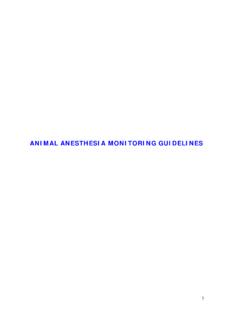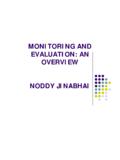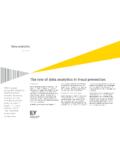Transcription of paediatric early warning scoring policy
1 paediatric early warning scoring policy Final paediatric early warning Tool EQUALITY IMPACT The Trust strives to ensure equality of opportunity for all both as a major employer and as a provider of health care. This policy has therefore been equality impact assessed by the Children's Clinical Governance group to ensure fairness and consistency for all those covered by it regardless of their individual differences, and the results are shown in Appendix 4. Version: Final Authorised by: Children's Clinical Governance Group Date authorised: 18th April 2014 Next review date: 17th April 2016 Document author: Sonia Keane TAMESIDE HOSPITAL NHS FOUNDATION TRUST paediatric early warning scoring policy Version Apr 2014 Page 2 of 11 Check the Intranet for the latest version VERSION CONTROL SCHEDULE paediatric early warning scoring policy Version : Version Number Issue Date Revisions from previous issue (final) December 2009 New policy (final) January 2012 Minor formatting changes (final) February 2012 Change to PEWS tool layout (final) April 2013 Further change to PEWS tool score guideline.
2 (final) April 2014 TAMESIDE HOSPITAL NHS FOUNDATION TRUST paediatric early warning scoring policy Version Apr 2014 Page 3 of 11 Check the Intranet for the latest version INDEX/ TABLE OF CONTENTS 1. INTRODUCTION .. 4 2. PURPOSE/RATIONALE/OBJECTIVES .. 4 3. SCOPE .. 4 4. DEFINITIONS .. 4 5. ROLES/REPONSIBILITES/ACCOUNTABILITIES .. 4 6. policy STATEMENT .. 6 7. THE PEWS PROCEDURE .. 6 8. policy DEVELOPMENT AND CONSULTATION .. 6 9. IMPLEMENTATION .. 6 10. MONITORING .. 7 11. REVIEW .. 7 12. REFERENCES .. 7 APPENDICES .. 8 Appendix 1 paediatric early warning Score Audit 8 Appendix 2 Tools of Assessment .. 9 Appendix 3 NHS Equality Impact Assessment Tool .. 11 TAMESIDE HOSPITAL NHS FOUNDATION TRUST paediatric early warning scoring policy Version Apr 2014 Page 4 of 11 Check the Intranet for the latest version 1. INTRODUCTION Infants and children admitted to hospital require regular clinical observations in order to ensure the early detection of deterioration.
3 The paediatric early warning Score (PEWS) is a specialised tool that measures the infant/ child s clinical status and recommends an appropriate response. This procedure is to be adhered to for all infants and children admitted to all areas within the trust. 2. PURPOSE/RATIONALE/OBJECTIVES The purpose of this policy is to describe the PEWS tool which has been developed and implemented as a result of research which indicates that the clinical risk to infants and children is reduced by early intervention, and that the PEWS system enables the early identification of signs of deterioration and initiating appropriate responses and management from the medical team. 3. SCOPE The policy applies to all infants and children who require acute medical assessment in any clinical areas within the trust. 4. DEFINITIONS The tool is designed to identify children who are at risk of deterioration. Each time clinical observations are taken the nurse should score these against the PEW triggers (Appendix 1).
4 The tool used was originally developed by Monaghan (2005) and adapted with permission making it useable with the facilities available in a District General Hospital. It has been previously audited as effective. early warning tools have successfully been used in the adult sector for some time and are acknowledged as vital in improving patient out comes nationally. The tool generates a numerical score in relation to assessed neurological, cardiovascular and respiratory status. Age appropriate clinical parameters have been taken from advanced paediatric life support (ALSG 2005). 5. ROLES/REPONSIBILITES/ACCOUNTABILITIES Chief Executive The Chief Executive has overall accountability for ensuring that the Trust meets its statutory and non-statutory obligations in respect of maintaining appropriate standards of patient care. The Chief Executive devolves the responsibilites for monitoring and compliance to the medical and executive nursing directors. Directors Directors are responsible for ensuring that the requirements of the Trusts paediatric early warning scoring policy for infants and children are effectively managed within their Directorate and that their staff are aware of, and implement, those requirements.
5 TAMESIDE HOSPITAL NHS FOUNDATION TRUST paediatric early warning scoring policy Version Apr 2014 Page 5 of 11 Check the Intranet for the latest version Director of Nursing/Medical Director The Director of Nursing and Medical Director are responsible for ensuring that Trust staff uphold the principles of paediatric early warning Scores and that appropriate polices and procedures are developed, maintained, and communicated throughout the organisation in co-ordination with other relevant organisations and stakeholders. Divisional Responsiblilities Divisional leads are responsible for ensuring PEWS completion is communicated and implemented within their areas of responsibility. Any incident arising from the PEWS of a patient must be documented on an incident form and investigated at a local level and actions taken to prevent reoccurrence and to minimise risk. Documentation should be copied to the Risk Management advisor to allow completion and closure of the incident.
6 Any action plans should be shared at the appropriate forum and the Children s Divisional Risk Management meeting. Any ongoing PEWS risks should be registered on the Divisional Risk / Trust register as appropriate. Ward Manager/Departmental Manager/Matron Responsibilities It is the Ward Manager / Departmental Managers responsiliblity to ensure that staff are made aware of the Trust processes for the completion of PEWS tool in infants and children. This procedure should be included in the induction training of all staff who may be involved in the admission and ongoing care of an infant/ child. Medical Staff Responsiblities All medical staff should ensure that they are familiar with the Trusts procedures for completion of PEWS in infants and children. Medical staff of registrar level or above who are responisible for the supervision and training of junior doctors should ensure that junior medical staff are aware of their role and that they respond appropriately to each individual scoring .
7 All Staff It is the responsibility of every registered nurse to ensure the PEWS policy is adhered to when assessing infants and children. All staff should report any incidents arising from completion of PEWS via the Risk Management route. The Ward/Departmental Manager should be informed of the incident. Risk Management The Risk Management Department will record on the Trust database all incidents reported relating to PEWS tool, through the risk reporting route. This data will be included in the monthly reports to the Heads of Departments and discussed at the Children s divisional risk management meetings. All untreated risks will be reported to the Trusts Risk Management Committee which reports to the Trust Clinical Governance Committee. TAMESIDE HOSPITAL NHS FOUNDATION TRUST paediatric early warning scoring policy Version Apr 2014 Page 6 of 11 Check the Intranet for the latest version 6. policy STATEMENT The purpose of this policy is to provide a consistent, evidence based standard of care which ensures that all sick infants and children are assessed and a PEWS obtained.
8 It effectively signposts nursing and medical staff to act appropriately in relation to the infant/ child s clinical condition. This policy does not encompass Do Not Attempt Resuscitation ( DNAR) orders in paediatrics. 7. THE PEWS PROCEDURE A complete baseline set of observations including blood pressure is undertaken on ALL children within one hour of admission onto the ward / department with the exception of day case surgery unless indicated by condition. Each set of physiological observations taken must be cross referenced with the paediatric early warning tool. (Appendix 1) Abnormal observations recorded by student nurses and health care assistants must always be verified by a qualified nurse. A paediatric early warning Score( PEWS) must be clearly documented to coincide with each set of observations. When a patient meets the trigger score and the tool is activated, the guidelines regarding frequency of observations and the need for medical assessment must be adhered to.
9 (Appendix 2) Some children will transgress the PEWS criteria in their normal state due to chronic illness. The medical and nursing staff must jointly agree and set alternative parameters so that they can be alerted of potential deterioration. The tool does not replace clinical judgment. If a child is deteriorating acutely or is peri-arrest call the crash team on 2222. Once the tool is activated the child is reviewed and examined, a plan of care must be documented which should include; investigations or interventions ordered, re-evaluation within a specific timeframe and physiological observation parameters that are acceptable. 8. policy DEVELOPMENT AND CONSULTATION The policy has been developed by a paediatric Sister for Children s Services with assistance from a paediatric Consultant and a member of the Risk Management team in line with the Clinical Care Outreach/PARS policy relating to adults. During development and on completion it will be circulated to the Senior Medical and Nursing teams in Paediatrics and the Accident and Emergency Department for comments.
10 A final version will be circulated for information after all comments have been taken into account and changes made as needed. 9. IMPLEMENTATION The policy will be launched through the Trust email system and will be discussed at paediatric departmental meetings to raise awareness of its use. Staff requiring training in the completion of PEWS will be identified through their PDR. Appropriate training sessions will be provided for these staff. TAMESIDE HOSPITAL NHS FOUNDATION TRUST paediatric early warning scoring policy Version Apr 2014 Page 7 of 11 Check the Intranet for the latest version 10. MONITORING The policy will be monitored by two yearly audits and analysis of the findings. Gaps and omissions in the policy will be action planned and outcome assessed. Where monitoring has identified deficiencies, recommendations and action plans will be developed and changes implemented accordingly. Progress on these will be reported to the paediatric Divisional Nurse Manager and at the Children s Clinical Governance and Risk management meetings.









